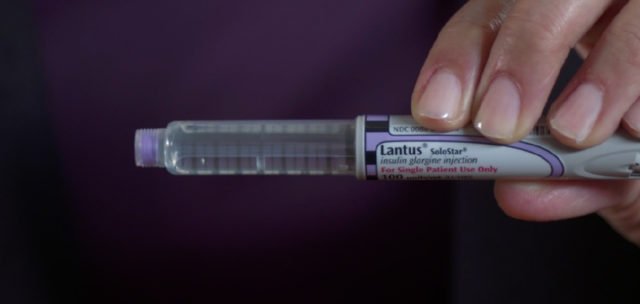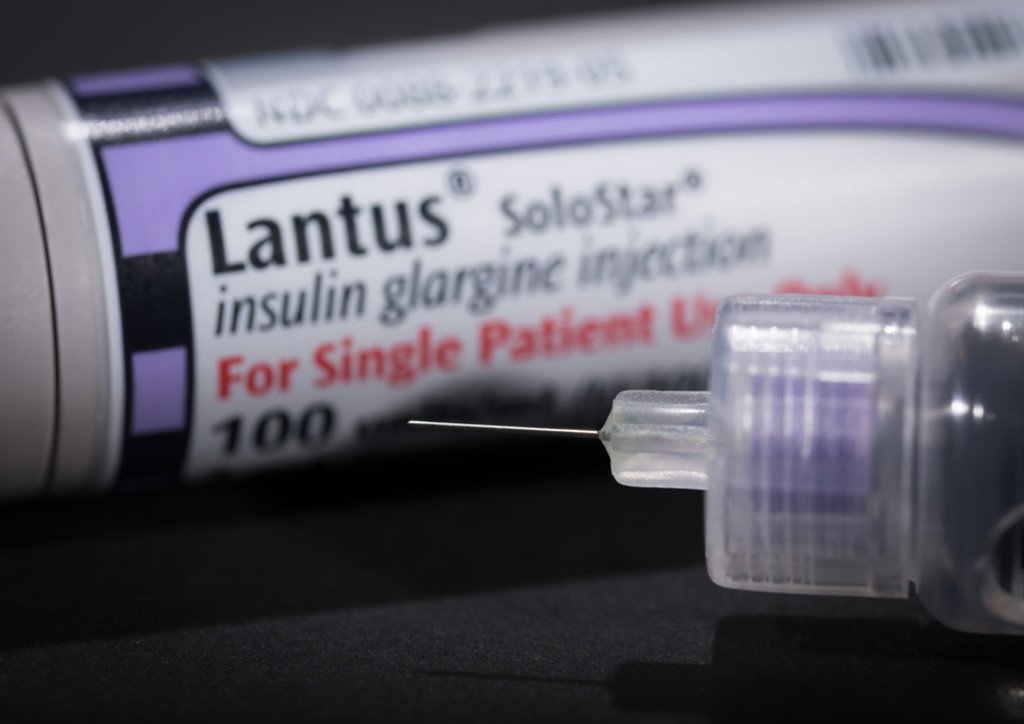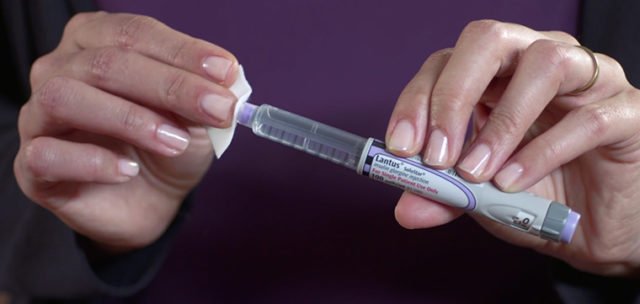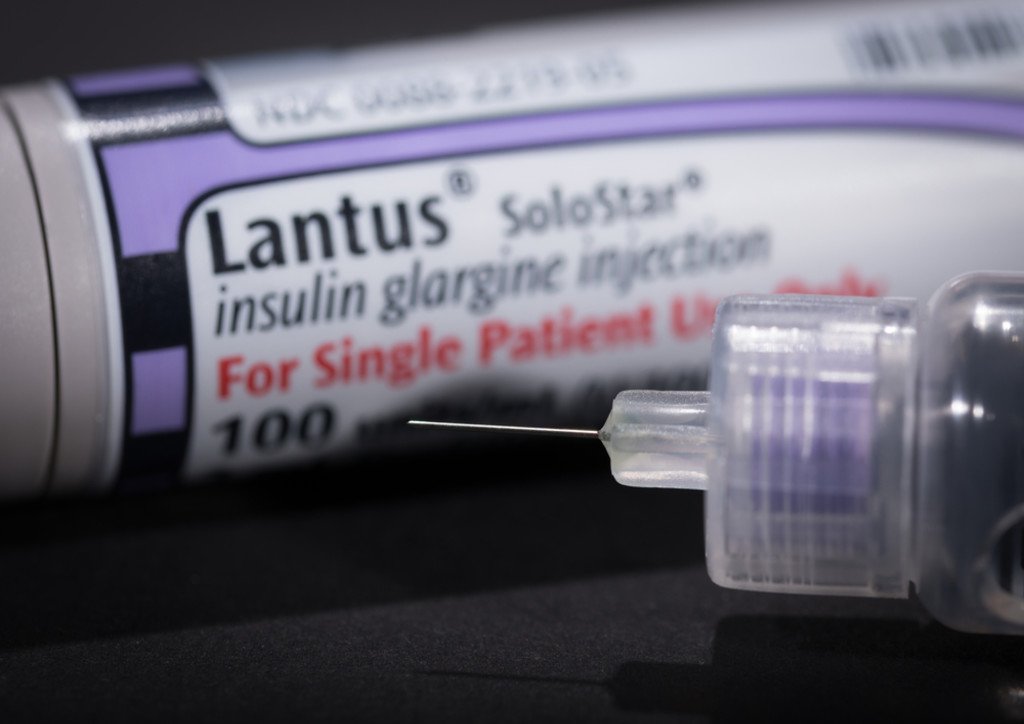Sarah starts her daily routine in a serene suburb that is just outside the busy city. Giving herself her dose of Lantus insulin at the beginning of each day has become a habit for her as much as breathing. Sarah was given a diabetes diagnosis a few years ago, and she depends on this medicine to keep her blood sugar levels consistent throughout the day. She considers how important insulin has become to her condition management, enabling her to live a full life in spite of her obstacles, as she meticulously measures out the shot.
The brand Lantus insulin, which she initially learned about from her doctor, has come to represent dependability and control. However, what is Lantus insulin exactly? How does the body go about controlling diabetes? Come along as we explore the mechanisms, applications, advantages, and things to keep in mind for people managing their diabetes as we unravel the tale of Lantus insulin.
Knowledge of Lantus Insulin

Lantus Insulin: What Is It?
Insulin glargine, also referred to as Lantus insulin in scientific circles, is a long-acting basal insulin analog that helps people with diabetes mellitus regulate their blood sugar levels. Lantus insulin functions gradually over a long period of time to give a baseline level of insulin throughout the day and night, in contrast to short-acting insulins, which are used to control blood sugar rises following meals.
Important Lantus Insulin Facts
| Aspect | Detail |
|---|---|
| Type | Long-acting basal insulin analog |
| Brand Name | Lantus |
| Generic Name | Insulin glargine |
| Administration | Subcutaneous injection |
| Duration of Action | Up to 24 hours |
Method of Action
With a few tweaks to extend its duration of effect, Lantus insulin is made to resemble the pancreas’ own natural insulin production. It slows the absorption of the drug into the bloodstream when injected subcutaneously because it creates microprecipitates at the injection site. This continuous release of insulin helps control blood sugar levels both during the day and at night.
Uses and Advantages of Lantus Insulin for Diabetes Management Diabetes mellitus, especially type 1 and type 2, is the main condition for which Lantus insulin is used. Those who need basal insulin therapy to maintain steady blood sugar control are prescribed it.
Lantus Insulin Indications
| Indication | Description |
|---|---|
| Type 1 Diabetes | Used as basal insulin to supplement mealtime insulins |
| Type 2 Diabetes | Prescribed for individuals not adequately controlled |
| Gestational Diabetes | Occasionally used under medical supervision |
Benefits
- Stable Blood Sugar: Lowers blood glucose swings by supplying a constant dose of insulin throughout the day.
- Convenience: Requires a single daily dosage, providing patients with simplicity and ease of usage.
- Diminished Hypoglycemia: Lantus insulin has a decreased risk of hypoglycemia (low blood sugar) than shorter-acting insulins.

Control and Ratio
How the Insulin Lantus is Given
The fatty tissue directly beneath the skin is injected with Lantus insulin subcutaneously. To promote maximum absorption and avoid lipodystrophy (changes in fat distribution), the injection site should be rotated.
Guidelines for Administration
| Administration | Details |
|---|---|
| Injection Site | Abdomen, thigh, upper arm, buttocks |
| Injection Technique | Subcutaneous injection technique |
| Dosage Adjustment | Individualized based on patient’s insulin needs and blood glucose levels |
Dosage
The amount of Lantus insulin prescribed varies based on a patient’s age, weight, insulin sensitivity, and treatment objectives. Medical professionals modify the dosage in accordance with treatment response and routine blood glucose testing.
Possible Adverse Reactions
Typical Side Effects
Although Lantus insulin is generally well accepted, some people may experience mild to moderate adverse effects. Weight gain, hypoglycemia (low blood sugar), and injection site reactions (pain, redness, swelling) are typical side effects.
Typical Adverse Reactions
| Side Effect | Description |
|---|---|
| Injection Site Reactions | Pain, redness, swelling at the injection site |
| Hypoglycemia | Symptoms include dizziness, sweating, confusion |
| Weight Gain | Possible due to improved glucose control |
What’s New about Lantus Insulin in 2024?
New Findings and Considerations for Diabetes Self-Care in the Use of Lantus Insulin in 2024:
Improved Formulation
Sanofi has introduced the “improved” formulation of Lantus insulin, which has improved stability and absorption. The new formulation reduces injection-site reactions and is associated with a more consistent glucose-lowering effect with an enhanced response observed in insulin-resistant patients.
Since Lantus can easily be incorporated into digital health solutions with the use of smart insulin pens and glucose monitoring systems, patients can easily track their dosages of insulin treatment through mobile applications that are able to count their blood sugar levels and provide the user with personalized recommendations. This will increase adherence to the prescribed treatment while giving real-time data to the providers.
Enhanced Access and Affordability
One of the expanded patient support programs, Sanofi, made Lantus insulin more accessible and affordable to more patients in need of the said product by giving discounts, co-pay assistance, and uninsured/underinsured options. As of 2024, they have the following:
Benefits of Lantus Insulin
Lantus insulin provides a number of benefits for a patient who has diabetes:
- It maintains blood glucose in the normal range throughout the day; it reduces nocturnal hypoglycemia and morning hyperglycemia, which are typical features of long-acting agents.
- Very good dosing regimen: Lantus makes the treatment of the patients who would be shifted onto basal insulin treatment relatively very easy because only one injection is required per day.
- Flexibility: Lantus can be administered alone or in conjunction with other oral medications and drugs controlling diabetes or in combination with rapid-acting insulins to get the best outcome from the effect of controlling blood sugar.
- Lower Risk of Weight Gain: Compared to other forms of insulin, Lantus poses lower risks of gaining weight. This is a great reason for many patients.
Side Effects of Lantus Insulin

Lantus Insulin is usually well tolerated but might cause some side effects. The common side effects are:
- Injection Site Reactions: Characterized by redness, swelling, and itchiness in the injected area.
- Hypoglycemia: It might occur if the sugar level lowers down; this mostly happens because of incorrect management of the dose.
- Weight Gain: This can result from increased internal levels of insulin. One tends to gain weight.
- Allergic Reactions: Even though this happens very rarely, there are a few patients who react allergic to this type of insulin known as glargine. This can vary from rash, itching, or even breathing difficulty.
For these major side effects or symptoms of hypoglycemia, one is advised to seek immediate medical assistance.
Dangerous Side Effects
In rare instances, Lantus insulin may cause more serious adverse effects such hypokalemia (low potassium levels) or allergic responses (rash, itching, difficulty breathing). Patients who encounter these symptoms have to get help right away.
Data Usage Trends and Statistics
Lantus insulin is still a commonly prescribed drug for the treatment of diabetes. With [Percentage]% of insulin prescriptions going toward basal insulin analogs like Lantus, according to data from [Source].
Patient Satisfaction
Lantus insulin is well-liked by patients since it is easy to use in everyday diabetes care routines and effectively maintains stable blood sugar levels, according to surveys.
FAQs pertaining to Lantus Insulin
How much time does the body store Lantus insulin?
Lantus insulin provides basal insulin coverage day and night with an action period of up to 24 hours.
Can you combine Lantus insulin with other types of insulin?
It is not recommended to mix Lantus insulin with other insulins in the same syringe. It ought to be given out individually.
How should I do if I forget to take my Lantus insulin dose?
Take your Lantus insulin as soon as you recall if you miss a dose. Do not give yourself two shots in order to make up for it.
Does insurance cover Lantus insulin?
Lantus insulin is covered by many insurance policies, though specifics may differ. For more information, patients should speak with their insurance company.
When use Lantus insulin, are there any food restrictions?
There aren’t any particular dietary requirements when taking Lantus insulin. Nonetheless, controlling blood sugar levels requires eating a balanced diet and keeping an eye on your intake of carbohydrates.
Conclusion
In conclusion, because Lantus insulin offers consistent basal insulin coverage, it is essential for the control of diabetes mellitus. Knowing Lantus insulin’s mode of action, advantages, and possible drawbacks enables people to make knowledgeable decisions about the management of their diabetes. Lantus insulin is a mainstay of diabetes therapy, maintaining its reputation for effectiveness, safety, and patient satisfaction while enabling people with the disease to live happy, healthy lives.
An extensive description of Lantus insulin, including its uses, advantages, administration, possible side effects, and frequently asked questions, has been given in this blog post.


